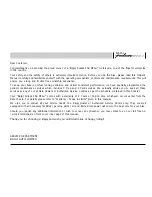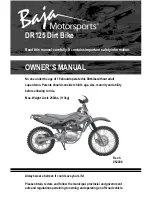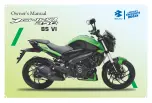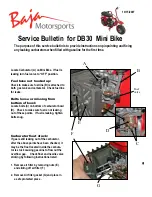
© 2002 Cannondale Corporation - All Rights Reserved
74
2003 Motorcycle OM.fm
WARNING
Indicates a potential hazard that could result in serious injury or death.
1.
Place the vehicle on a work, and cover the gas
tank with a clean rag.
2.
Remove the handlebar pad.
3.
Remove the bolts from each upper handlebar
clamp (1). Then, remove the upper handlebar
clamps and lay the handlebar on top of the front
number plate.
4.
Loosen the bolt (1) from each lower handlebar
clamp (2). Rotate the lower handlebar clamp
180° and tighten the bolts to the specified torque
5.
Place the handlebar onto the lower handlebar
clamps, Install the upper handlebar clamps, and
tighten the bolts to the specified torque.
Tighten the upper handlebar clamp bolts to 17.0
lbf•ft (23.0 N•m).
Tighten the lower handlebar clamps to 60.0 lbf•ft
(81.0 N•m)
NOTE :
Tighten the front bolts to the specified torque first.
Then, tighten the rear bolts to the final torque. This
creates a pinching action, instead of a squeezing
action, that is produced if the front and rear bolts
are tightened uniformly.
6.
After installing the handlebar, sit on the vehicle,
apply the front brake, and push down on the front
end a few times to check if the handlebar moves.
7.
Also, turn the handlebar from lock-to-lock to
check for looseness or binding.
1.
Upper handlebar clamp
1.
Bolts
2.
Lower handlebar clamps
(1)
(1)
(2)
(2)
(1)
(1)
WARNING
POTENTIAL HAZARD
Handlebar clamp bolts not tightened to their
specified torque.
WHAT CAN HAPPEN
Handlebar may move or come off during
operation. Failure to follow these warnings
can lead to an accident resulting in severe
injury or death.
HOW TO AVOID THE HAZARD
The lower handlebar clamps must be posi-
tioned evenly so there is the same amount of
space between both the front and rear. And,
they must be tightened to the specified
torque.
















































